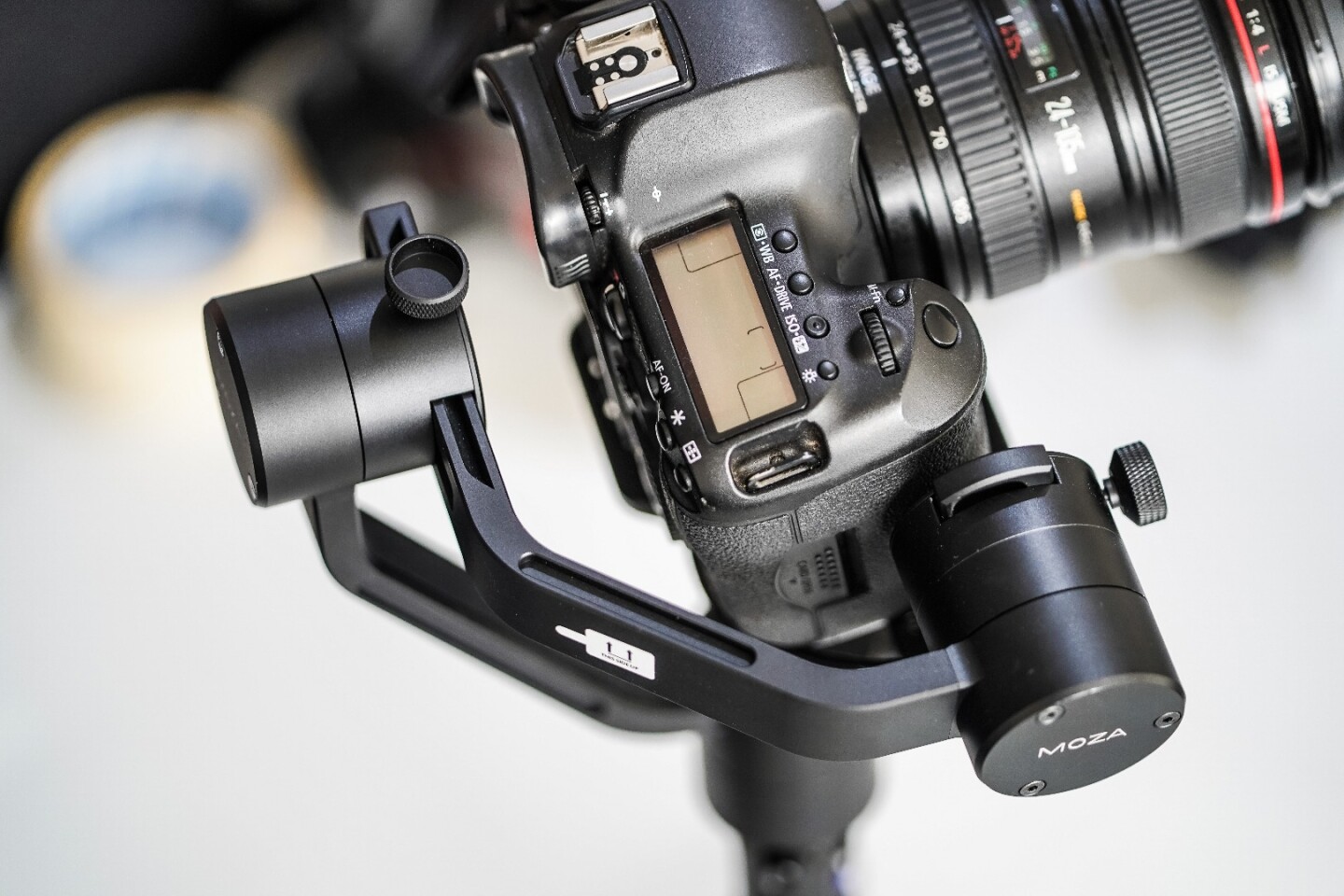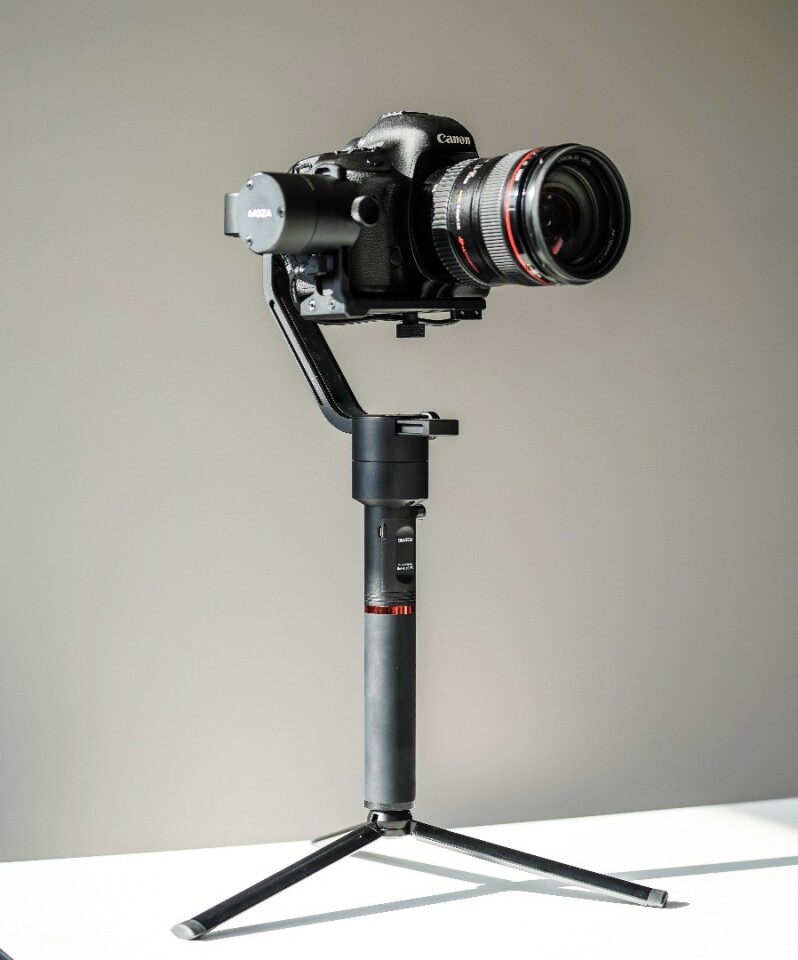Consumer-grade camera gimbals have basically evolved alongside drones, with cheap and plentiful electric motors and stabilizing technology leading to cheaper, lighter and more powerful units every year. At the point of the spear right now is the Moza Air from Chinese company Gudsen, which does the job of a far bigger rig without breaking your back or your bank balance.
The Moza Air is a three-axis hand-held gimbal that's powerful enough to stabilize 2.5 kg (5.5 lb) of camera gear, which is significantly more than most cheap Chinese gimbals can handle and enough to hold up a solid full frame DSLR complete with lens.
That's the sort of job that used to require the huge DJI Ronin, which would've cost you US$4,500 three years ago, and even now it's a $1,999 device. The Moza sells now for $599, and where the Ronin weighed 4.2 kg (9.3 lb), the Moza Air weighs just 1.1 kg (2.4 lb). Believe me, the weight difference is huge and very significant when you're carrying these things around all day.
The Moza Air boasts a full lightweight metal construction and it feels like a quality build. It ships with a Pelican-style hard plastic carry case, while your three rechargeable battery cells screw into the handle and charge separately on a charger. They're not proprietary battery shapes, so you can buy more cells easily and cheaply.

Balancing the Moza Air
You balance up your camera by shifting it around on the base plate, and moving the balance points of the three gimbal arms. It's a little fiddly, particularly the first time, but nowhere near as annoying as setting up a FlyCam-style weighted stabilizer in my experience.
If you want to give yourself a bit more stability to hold it with, you can clip on an extra set of handles that makes it a two-handed rig without adding much extra weight.

Optional remote control and free smartphone app
For an extra $200 you can upgrade the Moza Air with a nifty thumb control remote. It's got a joystick to control the gimbal with, but you can also use it to control your camera using a start/stop recording button and a focusing scroll wheel. The gimbal communicates with the camera through a little USB cable. It's terrific. We do wonder, though, why you can't press in the joystick button like you can on the main gimbal, to put the gimbal in standby mode or wake it up.
If you're not keen on the remote, there's a free smartphone app that can do much of the same stuff, as well as setting up motion time-lapse style shots that pan slowly and precisely over a period of several minutes or hours for a very nice effect.

Gimbal modes
The Air is pretty easy to use and features three modes. Yaw follow keeps the camera level and follows you as you turn side to side, smoothing out the movements. Yaw/tilt follow does the same, and also lets you smoothly tilt the camera. Then there's full lock mode, which keeps yaw, tilt and roll locked unless you're moving them with the joystick.
You can mount the camera on top, underneath or flat forward in a flashlight orientation, but any way you mount it you're going to find yourself having trouble seeing the rear screen unless you've got a flip out monitor, because the rear motor gets in the way.
It's not terrible. If you hold it off to your right you can kind of peek in there, but if you let the camera get around to your left, it gets very hard to see what you're doing. There's always the option of running an external monitor mounted on the handles somewhere, but this is pretty much just something you've got to deal with, whichever gimbal stabilizer you use.

Practical considerations
Despite the Moza Air being very lightweight, it's still a chunky old thing to carry around for a shoot once you stick a camera on top. Put it this way: after five solid minutes carrying this thing around, one- or two-handed, your back is going to feel it.
To help out with that, Moza includes a little set of tripod legs you can screw onto the bottom, so you can set it down on the ground. They also come in handy for precise control of pan movements as you shoot.
The screw mount on the bottom of the gimbal also lets you attach it to other rigs – vehicle mounts, cable cams, sliders and other motion rigs – although we're not sure how much we'd trust it with an expensive camera on top.
Reviewing footage on the back of the camera between takes can cause the gimbal to flip out a bit and switch itself off, so you're better off holding in the joystick button to turn off the motors and go to Standby mode.
Battery life seems pretty decent. Obviously, you're not using it for every shot, but we haven't found ourselves needing to recharge in the middle of a day. If you're going to work it a bit harder, you can always buy a few more battery cells.

Conclusions
All in all, this thing does what it says on the box. We've been testing it with a big ol' Canon 5D Mk.III and a 24-105 lens, as well as smaller mirrorless rigs like the Panasonic GH5, and it's handled them and stabilized them with no issues. It takes some skill to use effectively – something we're still working on – and it will suck up a few minutes of setup time when you break it out on a shoot.
For around $800 including a carry case, double hand grip and the thumb remote, the Moza Air is a relatively cheap, easy and effective stabilizer option to add to your video production gear, and it'll get you some shots you simply can't do without it. We're impressed!
Check out some sample video below.
Product page: Gudsen Moza Air


















